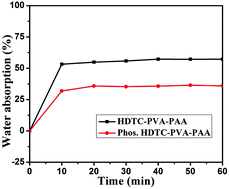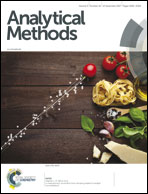Monitoring of drinking water quality: a preliminary approach by an electronic tongue based on functionalized polymer membrane electrodes†
Abstract
Functionalized polymer membrane electrodes based multichannel sensor is used as an electronic tongue to monitor the drinking water (DW) quality simply by measuring the surface electric potential with respect to Ag/AgCl reference electrode in 1 mM aqueous KCl. Changes of minute concentration of dissolved minerals greatly affected the surface potential of the sensor. The three-channel sensor device (electronic tongue) is made by using three different functionalized polymer membrane electrodes, namely, phosphorylated hexadecyl trimethyl ammonium chloride modified polyvinyl alcohol–polyacrylic acid membrane; phosphorylated and crosslinked polyvinyl-co-ethylene membrane; phosphorylated and crosslinked polyvinyl alcohol membrane, as working electrodes and a Ag/AgCl reference electrode. Developed electronic tongue is utilized for the sensing measurements of five different branded drinking water samples. Sensor characteristics, like, temporal stability, response stability, response patterns and repeatability of responses have been studied. Principal component analysis of the sensing data shows good discrimination among the analytes under study. Distinctive response patterns were observed for different drinking water samples in variation with the concentrations of dissolved minerals. Surprisingly sensor has done great job in order to monitor the dissolved minerals as present in tested samples with the help of standard calibrated sensing data.



 Please wait while we load your content...
Please wait while we load your content...